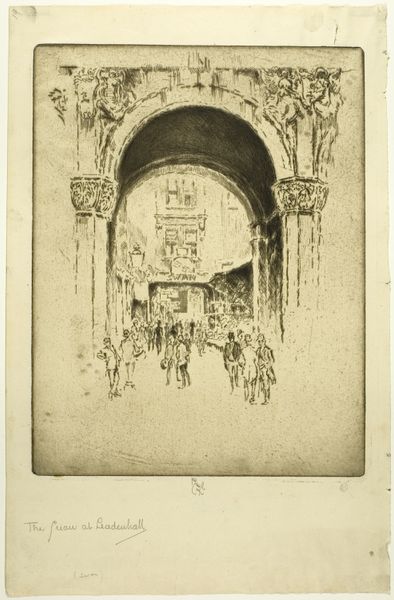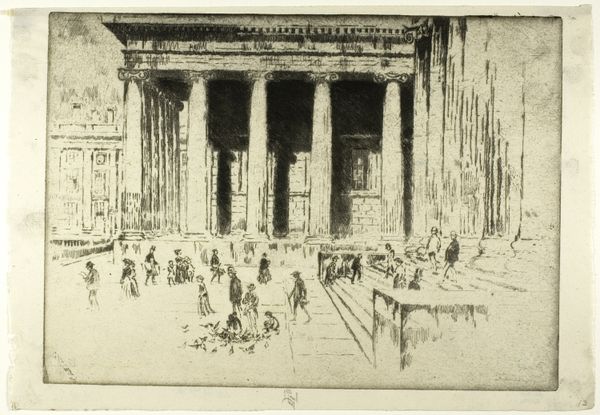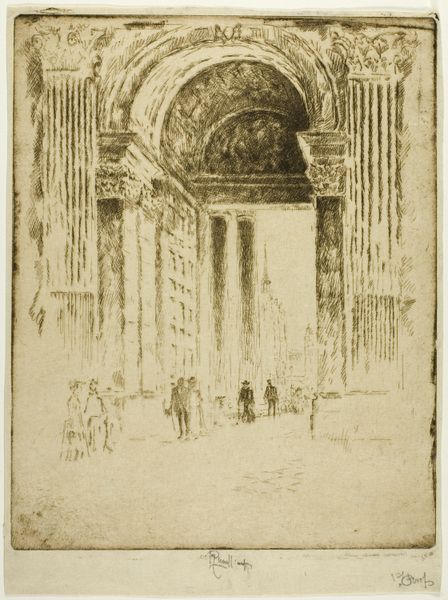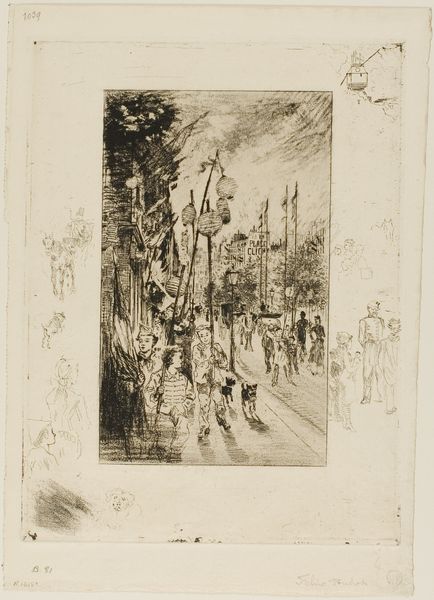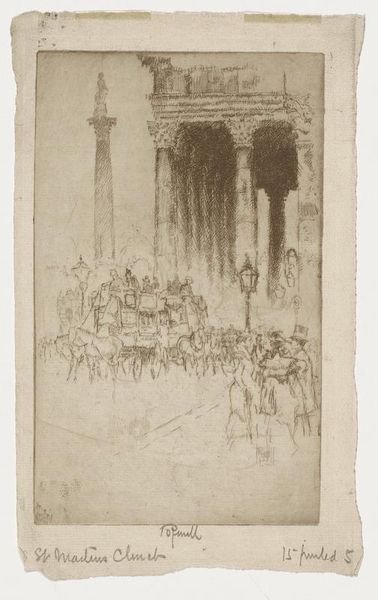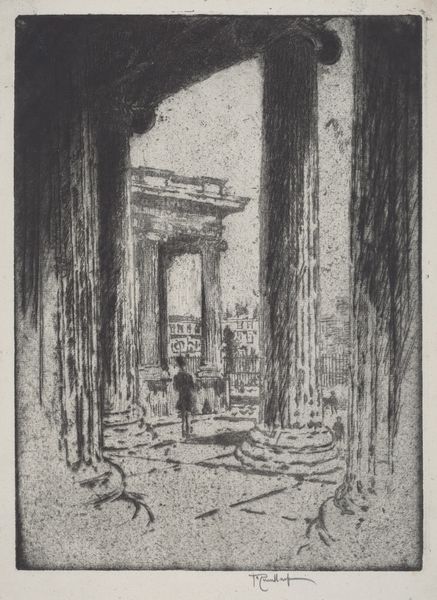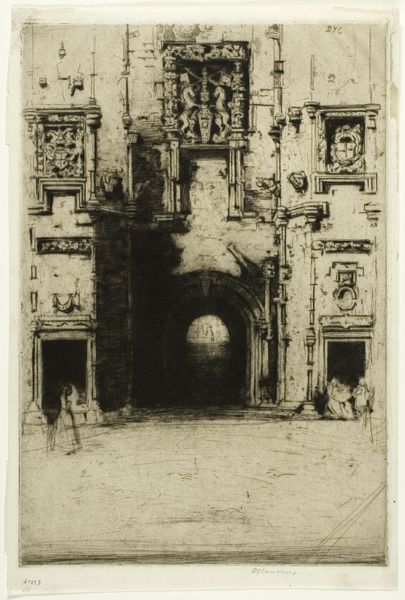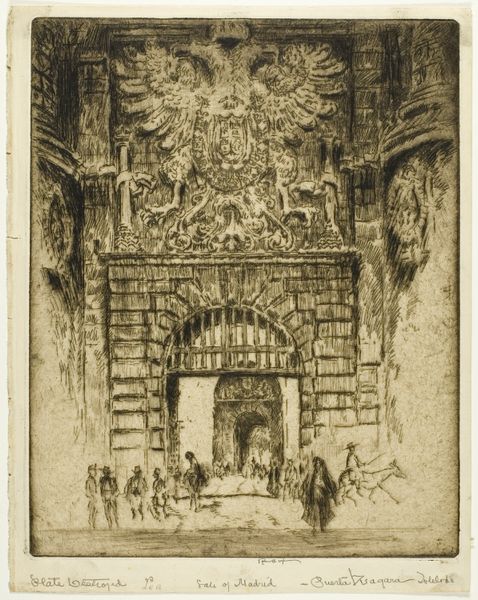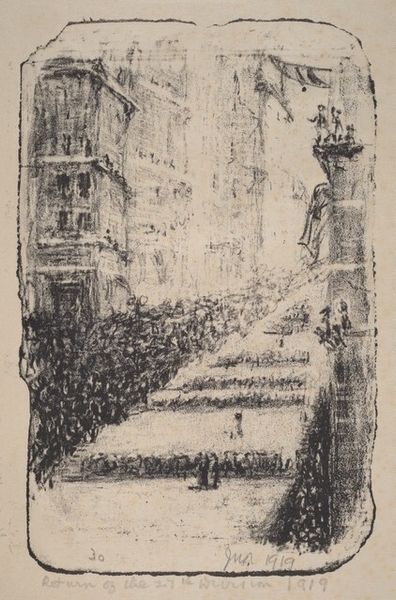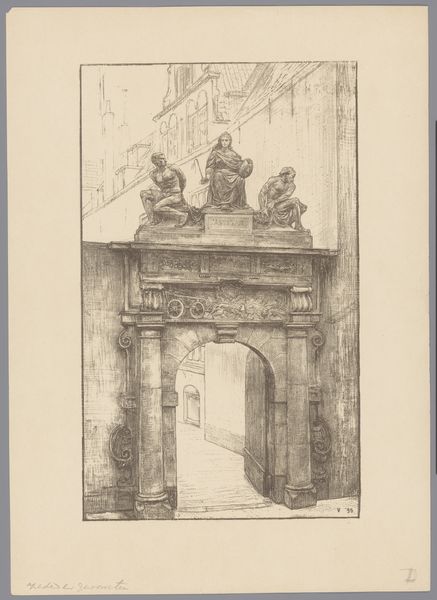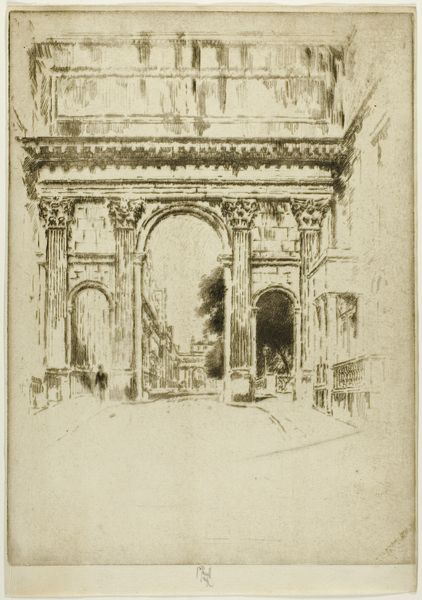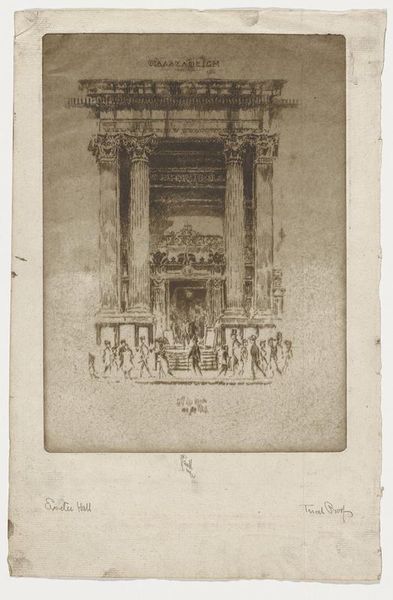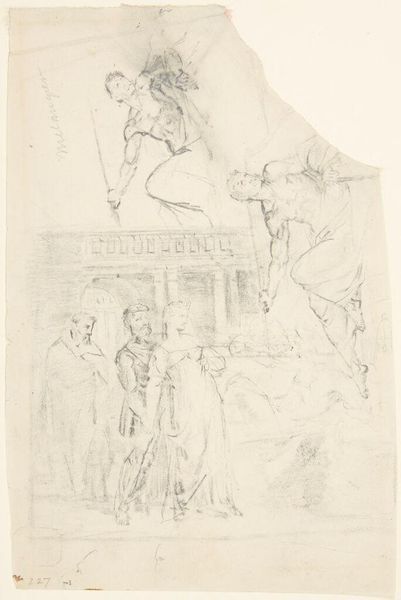
drawing, print, etching, paper
#
drawing
# print
#
impressionism
#
etching
#
landscape
#
paper
#
cityscape
Dimensions: 228 × 177 mm (image); 236 × 189 mm (sheet)
Copyright: Public Domain
Editor: Here we have Joseph Pennell’s "Euston," an etching from 1886, printed on paper. The scene is dominated by the station’s architecture, but it's also teeming with figures and carriages. There's a beautiful sense of depth but something almost imposing in the depiction of the building itself. What stands out to you? Curator: It's fascinating how Pennell captures the grandeur of Euston station, but from a historical perspective, it also reveals much about the era. The Euston Arch, of course, served as a literal gateway to London and the promises it held, becoming an emotive symbol of empire. Pennell isn’t just documenting architecture; he's documenting the social theatre of Victorian London and its ambitions. Notice the flurry of figures at the entryway. Who are these people and what is this specific context? Editor: I hadn't considered the "gateway" aspect so literally. I was so caught up in the Impressionistic style, that I had not focused as much on the fact this was a functional transportation hub that has huge economic, political and social ramifications. The Arch acted almost as a Roman Triumphal arch, representing empire, industry, and perhaps social mobility all at once. Curator: Exactly. The "Euston Arch" operated, in the public consciousness, as a carefully crafted emblem that stood for the era. To add another layer to this reading of the imagery of the "Arch," consider how it became a matter of immense public controversy and discourse. It was demolished in the 1960s. The demolition generated a widespread sentiment of profound grief, in essence altering and cementing its public value. How do you think Pennell's choice of printmaking affects the work's message, considering it was easily reproducible for mass audiences? Editor: Well, by choosing printmaking, Pennell made the statement and impact far-reaching. The image could circulate widely, shaping public opinion about the railway, about London, about progress and empire. It's amazing to consider how the Arch was so much more than just a building! Thank you, I hadn’t fully recognized all that history within the artwork. Curator: And I had not looked at the Arch's later public importance after its demolition; food for thought!
Comments
No comments
Be the first to comment and join the conversation on the ultimate creative platform.
